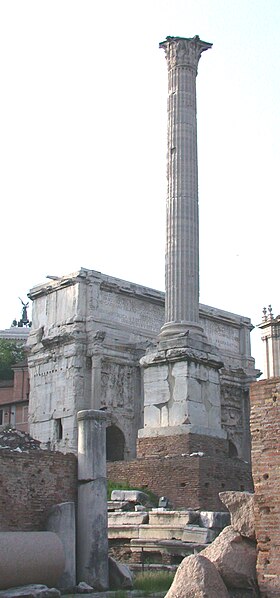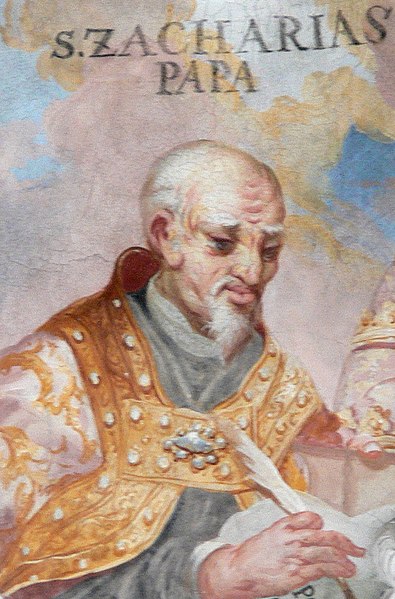Pope Zachary was the bishop of Rome from 28 November 741 to his death. He was the last pope of the Byzantine Papacy. Zachary built the original church of Santa Maria sopra Minerva, forbade the traffic of slaves in Rome, negotiated peace with the Lombards, and sanctioned Pepin the Short's usurpation of the Frankish throne from Childeric III. Zachary is regarded as a capable administrator and a skillful and subtle diplomat in a dangerous time.
Contemporary Byzantine fresco in Santa Maria Antiqua
The Byzantine Papacy was a period of Byzantine domination of the Roman Papacy from 537 to 752, when popes required the approval of the Byzantine Emperor for episcopal consecration, and many popes were chosen from the apocrisiarii or the inhabitants of Byzantine-ruled Greece, Syria, or Sicily. Justinian I reconquered the Italian peninsula in the Gothic War (535–554) and appointed the next three popes, a practice that would be continued by his successors and later be delegated to the Exarchate of Ravenna.
The Basilica of San Vitale in Ravenna, consecrated in 547, combines Western and Byzantine elements.
The Column of Phocas, the only extant public monument erected in seventh-century Rome by the Byzantines
Pope Martin I was abducted by Constans II and died in exile.
Pope Zachary was the last pope of Greek extraction and the last to seek imperial confirmation of his election.





